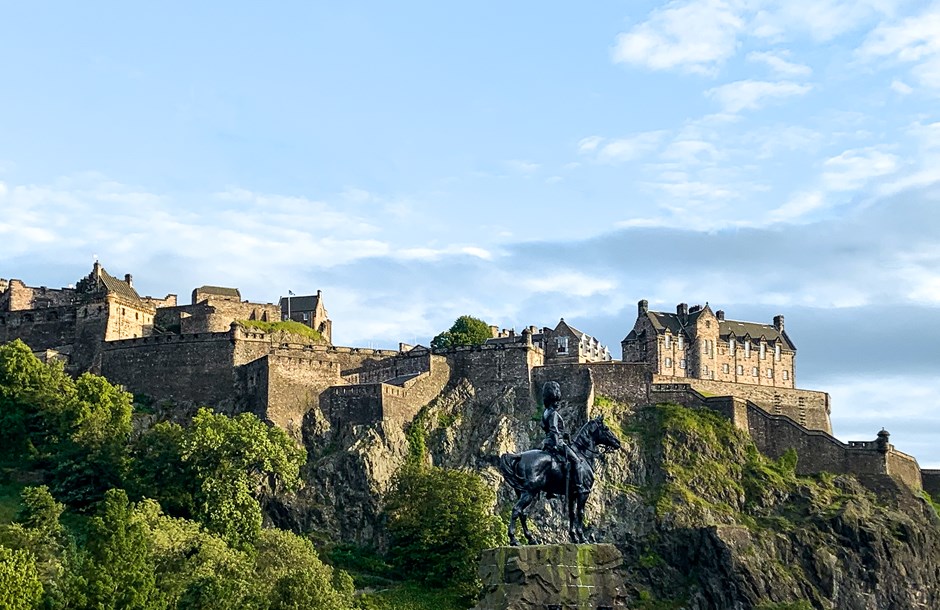Iconic buildings: Edinburgh Castle
Edinburgh Castle is a spectacular sight, perched on top of a huge rock above the modern city. It is not one but many buildings, and the castle has played an important role in the history of Scotland.

A brief history of the castle
Edinburgh Castle was a royal residence as long ago as the 11th century. Scottish kings in the Middle Ages spent a lot of their time there, but the castle became embroiled in the bitter wars between the Scots and the English between the 13th and 16th centuries.
It was repeatedly invaded, changed hands and rebuilt. In fact it is the most besieged castle in Britain. Some sieges did not go quite so well. In 1715 the Jacobites had to abandon theirs because the ladders they brought were too short!
From the 18th century the castle was used as a military barracks and a prison, before becoming a national monument.
What is so special about Edinburgh Castle?
There is history all around you at Edinburgh Castle.
Kings of Scotland and England were born and died there. The Honours of Scotland, the oldest crown jewels in Britain, reside in the Crown Room. The Great Hall, built in 1511, is one of the finest medieval buildings in Scotland. Mary Queen of Scots gave birth to James I, the first king of both Scotland and England, at the Royal Palace in 1566. Charles I stayed there the night before his coronation in 1633 – the last monarch to sleep in the Royal Palace. The Stone of Destiny, an ancient symbol of Scotland’s monarchy, is also on display in the Crown Room.
Design and construction

When was Edinburgh Castle built?
It is not known exactly when the castle was first built. There are references to Edinburgh in some historic annals but the first time a castle is mentioned is in 1093. The earliest surviving building in the castle, St Margaret’s Chapel, dates from the 12th century – it is the oldest building in Edinburgh.
How long did it take to build the castle?
The castle buildings date from different eras, and as the castle was the target of so many sieges it meant that considerable rebuilding was always taking place. For example, when Robert the Bruce besieged the castle in 1314 he destroyed everything except St Margaret’s Chapel. New buildings were still being added to the castle complex in the 19th century.
What kind of stone is Edinburgh Castle made of?
Many of the buildings we see today on top of castle rock are built from Craigleith sandstone – a high quality stone that was used throughout the city. The Craigleith Quarry on the outskirts of modern Edinburgh was opened in 1615. In its heyday as many as a hundred men would be breaking up the stone and carting it from the quarry.
It was the source of stone for not only the castle buildings, but Holyrood Palace and much of the Old and New Town areas of the city. If you walk round Edinburgh today you will get to know Craigleith sandstone very well.
The job of a stonemason then was a little different to today. There was not much in the way of health and safety!
What is the castle built on top of?
Edinburgh castle is built on the site of an extinct volcano that is thought to have erupted around 300 million years ago. The summit of the rock is 130 metres above sea level and is surrounded by cliffs on three sides. It is perhaps the perfect site for a castle (although that hasn’t stopped people throughout history trying to capture it).
Inspired by the castle? Find out more about a career in construction
Work to restore historic buildings like Edinburgh Castle and keep them in good condition requires special skills, and there are careers in construction that enable you to do this.
You could work as a stonemason, or train to be a heritage consultant, managing construction or restoration projects on historic sites.
